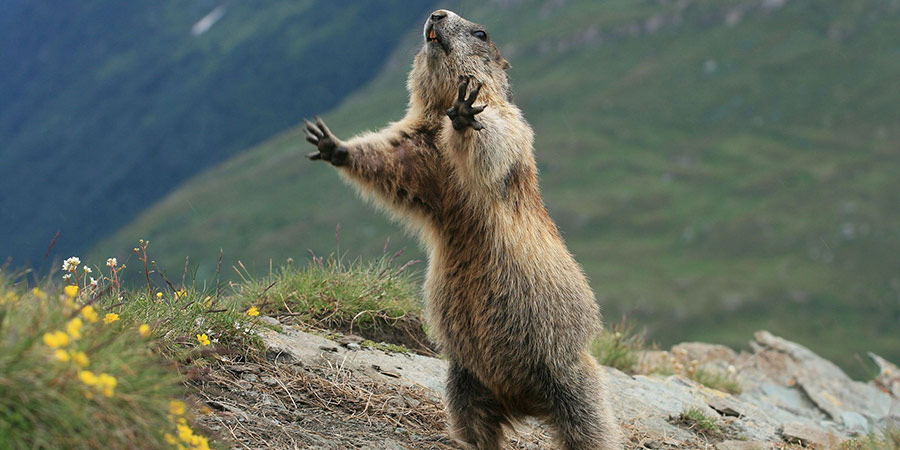If you thought that Switzerland was nothing but top-secret bank accounts, luxurious chocolate and Alpine mountains, then have no fear, we're on hand to put the record straight. Whilst it's a country that might be best known for these qualities - as well as a painfully efficient rail service and abundance of glitzy ski resorts - lurking, often quite literally, in the undergrowth budding naturalists can unearth fascinating facets of Swiss ecology.
With an incredibly varied climate thanks to its many elevated peaks, Switzerland is home to an array of diverse creatures, and these are our top 5 to keep a watchful eye out for if you're visiting.
1 - If you're a fan of cute rodents and enjoy watching squirrels dash around your garden, then you won't want to miss out on possibly sighting of an Alpine marmot. These beaver-like animals are prevalent in southern Switzerland, especially around the town of Zermatt in spring time (specifically April and March), when they start to emerge bleary-eyed from their hibernation burrows. Living in the shadow of the Matterhorn, they have learnt that making friends with humans not only helps kept them fed, but also means other predators are more likely to keep their distance.
2 - The wild ibex, a member of the goat family, can also be found in precipitous regions mainly above the snowline in Switzerland's most rugged areas. Their split hooves help them perform seemingly gravity-defying feats of gymnastics as they scale sheer cliff-faces searching for vegetation to graze on, whilst also staying out of reach of anything ranking above them in the food chain. Once extinct in this part of the world due to over-zealous hunters, it's thanks to conservation efforts during the mid-twentieth century that wild ibex herds can be seen clambering over Switzerland once again.
3 - Wild wolves are still an extremely rare sight in Switzerland, and they were completely eradicated about 100 years go as part of a campaign to exterminate the enite population across central Europe. Once believed to be blood-thirsty, indiscriminate killers, modern zoologists now know that they only hunt to sustain themselves and their packs, so when in 1995 a lone male roamed across the Italian border, and more followed in later years, the government introduced a policy that denotes these majestic creatures as a protected species, meaning that now there are once again packs roaming the countryside around Chur and Ticino.
Bears - In May 2017, the first bear in nearly two centuries was sighted in the Swiss canton on Bern. This was a historic moment for the province, who have kept captive bears in the capital city's Bärengraben, or bear pit (which is a lot more humane than it sounds, forming part of the Dählhölzli Zoo) since 1513. Bern even adopted the bear as its official emblem after the founder of the city, Duke Berthold V of Zähringen vowed to name it after the first animal he killed during a hunt in 1191, and today its coat of arms still proudly displays a towering black bear on a white background. There are other districts in Switzerland where bears are more common, but you are not likely to encounter any whilst out and about, and most aren't considered to be native - just amorous males who have strayed from western Italy.
The Golden eagle - Seen as the unofficial mascot of the United States, it's not just the land of the free that boasts a population of these resplendent birds. Unfortunately for our endearing marmot however, they are the main source of food for these honed hunters of the skies. They do give themselves away though, and marmots can alert the rest of the colony to danger with one whistle, which upon hearing signals for them to take cover underground. Then the eagles have to return empty-taloned to their eyries, built high in the rocky crevices of the Alps. Soaring on thermals caused by updrafts directed skywards by lofty mountain slopes, eagles thrive in conditions perfectly provided by Switzerland's topography along with many other birds of prey, including the bearded vulture, honey buzzard and black-winged kite.






